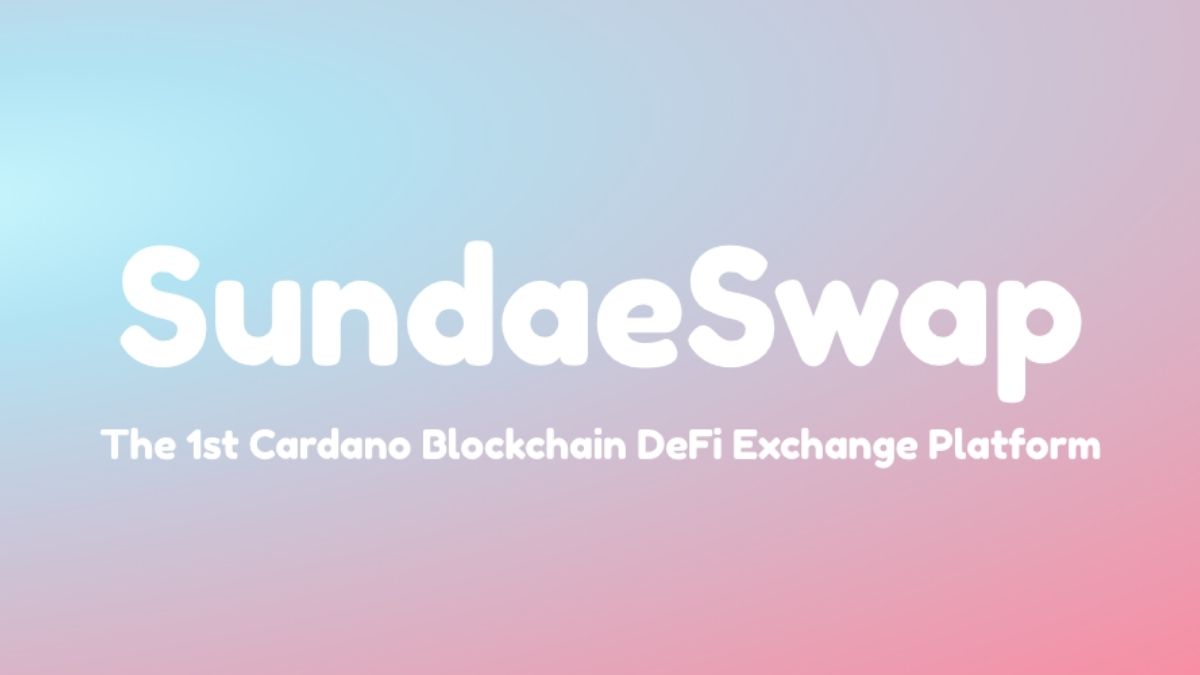Altcoins News
These are the reasons why Cardano (ADA) is up 100% this month

Cardano’s native cryptocurrency ADA has been on a roll since the beginning of February, seeing a price increase of over 100 percent since the beginning of the month. And while the overall bull market has been partly responsible for ADA’s price hike, the rally is mostly fueled by the major developments inside IOHK and a number of hugely important releases planned for this year.

Cardano’s smart contract era is getting closer to launch
Goguen, the era of the Cardano blockchain that will unlock its smart contract functionality, has been in development for at least as long as Shelley has. The teams behind the blockchain have been working on almost all of its phases simultaneously to ensure smooth launches and minimal performance issues.
The first of the two hard fork combinator (HFC) events set to unlock Goguen took place on February 3rd, bringing native assets to the Cardano testnet. At the end of February, the same upgrade is set to roll out to the Cardano mainnet and transform Cardano into a DeFi platform.
The market reacted strongly to the upgrade, as Cardano is one of the few, if not the only blockchain platforms, that handles tokenization natively. This means that user-defined tokens on Cardano act exactly the same as its native cryptocurrency does. Having native assets built into the ledger means that transactions between native tokens and assets do not incur execution fees, making DeFi applications much more affordable and efficient.
The network will become fully community-controlled in less than two months
While decentralization has been the biggest talking point of the crypto industry in the past year, only a handful of networks have actually taken concrete steps to become fully community-owned and operated.
IOHK, the company behind Cardano, is set to give up all control over block production on the network on March 31st., when the d-parameter will go down to zero. The d-parameter is a metric used to represent the percentage of blocks that are produced by IOHK. When Shelley, Cardano’s staking era, was launched last year, the parameter was set at 1, meaning that 100 percent of the blocks on the network were produced by the company.
With each epoch, the value of the d-parameter slightly decreased and is set to reach zero on epoch 257. Once d reaches zero, IOHK’s only role in the Cardano ecosystem will be to continue developing the network until its mandate runs out.
Knowing that the network you invest in cannot be controlled by its founding company was certainly something that attracted many users to Cardano, pushing ADA’s price well past $0.71 at one point this week.
IOHK’s Africa deals could bring millions of new users to Cardano
Both IOHK and the Cardano Foundation have been outspoken about the potential Africa has for blockchain adoption, frequently investing in various development and education programs across the continent. Charles Hoskinson, the CEO of IOHK, revealed late last year that the company was working on a number of projects involving Cardano aimed exclusively at Africa.
And while the public will have to wait for the end of the month to hear concrete information about the project, the latest reports have shown that IOHK’s “major” African project is in its final stages of development.
In a recent interview with the Proof of Africa, IOHK’s director of African Operations John O’Connor revealed that the company was in the final stages of a large government contract in Africa. When launched, the project could onboard millions of new users onto the Cardano platform and become one of the largest real-world implementations of blockchain technology.
What is clear is that almost all of the projects IOHK is working on in Africa will be based on Atala PRISM, IOHK’s identity solution based on Cardano. O’Connor revealed that the company has “reasonable plans” to onboard 100 million users on this identity platform within the next couple of years.
The possibility of having tens, and maybe even hundreds of millions of users on Cardano in the next two years has certainly rallied up the market. There has been an increase both in ADA’s trading volume and the number of new ADA wallets created, indicating that the market has been reacting strongly to the positive news coming from Cardano.
Altcoins News
Shiba Inu: Celebration for the Burning of 176 Million SHIB in a Historic Transaction

In an exciting development for the Shiba Inu community, September 20 marked a significant milestone as Shiba Inu’s official burn tracker announced that over 176 million SHIB tokens had been burned in a single transaction. But that’s not all; in the last 24 hours, a total of 135,933,606 SHIB tokens were burned, adding up to an impressive total of 521,814,163 tokens burned in just 7 days.
Impact on SHIB Price
As expected, this exceptional event has captured the attention of the cryptocurrency community and Shiba Inu investors worldwide. In the latest hourly update provided by Shibburn, the current price of the meme coin stands at $0.0000073, with a slight 0.15% decrease in the last hour. Although there has been a 1.34% decrease in the price in the last 24 hours, Shiba Inu’s market capitalization remains strong, valued at $4,297,527,749.
Lucie: The Voice of the Shiba Inu Community
On September 18, a key member of the Shiba Inu team, known as Lucie, addressed the community to answer burning questions about the highly anticipated SHIB token burn in Shibarium. Lucie emphasized that token burns are scheduled per transaction, meaning they occur based on the level of community participation. In a passionate plea, she urged SHIB holders to support this effort, stressing that SHIB burns are the result of close collaboration between developers and the community.
Lucie also pointed out that while it’s exciting to see enthusiasm for token burns, it’s crucial for the community to understand that SHIB burns are a community-driven initiative and not a call for developers to take immediate action.
Shibarium’s Focus: Strengthening BONE ShibaSwap
Amidst this backdrop of token burns, the Shibarium team has shifted its focus to strengthen the Bone ShibaSwap token, also known as BONE. Lucie emphasized that the implementation of BONE aims primarily to safeguard the interests of investors. To achieve this goal, the team has implemented a temporary locking contract along with a decentralized multi-signature wallet, ensuring maximum protection for Shiba Inu investors.
Shibarium’s Success with NOWNodes
Recently, Shibarium achieved an impressive feat by processing over 7 million RPC requests for the network in just one week. This achievement sets a new record for the platform and underscores the growing importance of Shibarium in the cryptocurrency ecosystem. NOWNodes, a node service provider supporting more than 80 blockchain networks, reported on this noteworthy accomplishment, highlighting Shibarium’s increasing relevance in the world of cryptocurrencies.
The Shiba Inu community is excited about these recent developments and the massive SHIB token burn, further bolstering their confidence in the project. With Shibarium gaining momentum and active community engagement, the future of Shiba Inu appears bright in the world of cryptocurrencies.
Altcoins News
Crypto Enforcement Funds Under Scrutiny: Congressman Emmer Calls For Restrictions On SEC

In a recent statement, Congressman Tom Emmer, a prominent figure in the GOP and a staunch advocate for crypto, expressed his concerns regarding the actions of Securities and Exchange Commission (SEC) Chair Gary Gensler.
Emmer accused Gensler of abusing his authority, leading to the expansion of the Administrative State while “disregarding the interests of the American people”.
To address these concerns, Emmer plans to sponsor an appropriations amendment aimed at restricting the SEC’s use of funds for crypto enforcement until clear rules and regulations are established.
Emmer Advocates For Clear Rules In The Crypto Industry
Emmer’s criticism of Chair Gensler centers on what he perceives as the weaponization of taxpayer dollars. Emmer argues that Gensler has utilized his position to further centralize regulatory control without ensuring a transparent and regulatory-friendly environment for the crypto industry.
By proposing to restrict the SEC’s funds for digital asset enforcement, Emmer seeks to emphasize the need for clear guidelines that protect both investors and innovators in the crypto space.
Addressing Senator Elizabeth Warren’s stance on cryptocurrencies, Emmer refers to her as a “control-freak senator” with an inclination towards centralized control.
He suggests that Warren favors a government-owned banking system and desires to retain the centralized power that comes with central banking. Emmer acknowledges the importance of central banking’s role but emphasizes the need for its evolution to adapt to the 21st century.
Emmer further asserts that attempts to suppress digital assets and cryptocurrencies are futile. He cites China’s unsuccessful ban on mining activities as evidence that even authoritarian regimes struggle to control decentralized technologies.
Emmer believes that a country like the United States, which “cherishes freedom”, cannot impede the progress of digital assets and cryptocurrencies.
The congressman’s remarks shed light on his perspective as an advocate for the crypto industry and his concerns regarding regulatory overreach. Emmer emphasizes the necessity of clear and balanced regulations that foster innovation while protecting investors.
By sponsoring an appropriations amendment, he aims to use the legislative process to ensure that the SEC’s enforcement actions align with well-defined rules and regulations.
As Emmer’s proposed amendment gains attention, it reflects the ongoing debate surrounding crypto regulations in the United States. The crypto industry seeks regulatory clarity to foster growth and innovation, while regulatory bodies like the SEC aim to protect investors and maintain market integrity.
Finding the right balance between oversight and innovation remains a key challenge, and Emmer’s efforts contribute to shaping the future of crypto regulation in the United States.
It remains to be seen how Emmer’s appropriations amendment will progress through the legislative process and how it will be received by his colleagues.
As the nascent industry continues to evolve, the role of Congress and regulatory agencies in establishing a clear and balanced regulatory framework will be crucial for its long-term success and widespread adoption.
Featured image from iStock, chart from TradingView.com
Altcoins News
US Forces Young Hacker To Forfeit $5.2 Million In Bitcoin

Last month, Ahmad Wagaafe Hared, a young hacker based in the United States, was ordered to forfeit approximately $5.2 million worth of Bitcoin (BTC), Stellar (XLM), and a BMW sports car to the government. According to a report, this order was made last week due to Hared’s involvement in a SIM-swapping scheme that targeted crypto executives in North California and the Bay Area.
The Bitcoin SIM-Swapping Hack
The SIM-swapping scheme, orchestrated by Hared–who went by the alias “winblo” — began in 2016 and was stopped by local authorities in 2019.
Hared and his accomplices obtained their victims’ contact information before entering a plea agreement with law enforcement agencies. They would then contact cellphone service providers, manipulating company representatives into believing they were the legitimate owners of the targeted phone numbers.
After that, they swapped cards, illegally taking control of their victims’ phone numbers. With this scheme, the hacker gained unauthorized access to their victims’ email and other crypto accounts before transferring coins.
The success of this scheme is evident in the significant amount of assets ordered for forfeiture. Hared must surrender 119.8 BTC, valued at $5.2 million, and 93,420 XLM, worth $11,770. A 2017 BMW sports car, believed to be proceeds of crime, must also be surrendered to the state.
The young hacker has been under arrest for over three years now. As mentioned, in 2019, Hared entered a plea agreement, though many case documents remain sealed, and the deal has not been disclosed to the public. Hared will be sentenced in January 2024 after pleading guilty to conspiracy to commit wire fraud.
According to details, this case is tied to another SIM-swapping scheme, which saw the indictment of Anthony Francis Faulk, also known as “shade,” who pleaded guilty to conspiracy to commit wire fraud in 2019.
Hackers Have Stolen Over $200 Million In 2023 Alone
In a recent report, blockchain intelligence firm Chainalysis claimed that hackers linked to North Korea have stolen over $200 million worth of cryptocurrencies to finance their nuclear weapons program.
In August, Lazarus Group said to be sponsored by the North Korean regime, was linked to the $34 million CoinsPaid hack. They were also reportedly behind the Stake.com hack, the FBI claims. The hit on the crypto casino saw over $40 million of coins robbed.
As part of their activities, hackers employ several tactics to steal Bitcoin and coins, including SIM-swapping, phishing, supply chain attacks, and infrastructure hacks.
Feature image from Canva, chart from TradingView
-
Opinion2 years ago
XRP: FOX Business Senior Correspondent Says SEC Is Losing Its Lawsuit Against Ripple
-
Tutorials3 years ago
How to Earn, Farm and Stake CAKE on PancakeSwap with Trust Wallet
-
Altcoins News3 years ago
Projects with ongoing migration from Ethereum to Cardano
-
NFT3 years ago
CardanoKidz: The first NFTs arrive at Cardano
-
Tutorials3 years ago
How to set up a Bitcoin node: beginner’s guide
-
NFT3 years ago
SpaceBudz: new astronaut NFTs on Cardano
-
DeFi News3 years ago
Uniswap vs PancakeSwap: Full analysis
-
DeFi News3 years ago
Liqwid Finance the first DeFi project on Cardano: everything you need to know



















